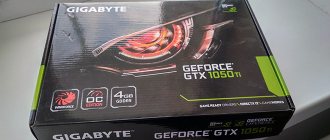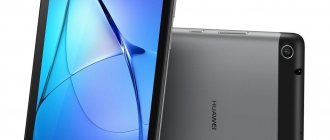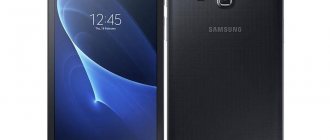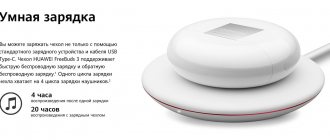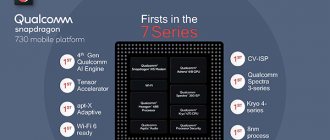An SSD disk (another name is a solid-state disk) is a non-volatile removable drive for storing and quickly exchanging information. Unlike HDD drives, such a device has no moving elements and is also capable of copying information at high speed. Such gadgets have long been firmly established in our lives, but many users do not have the necessary information to purchase the most optimal option. To make your search easier, the editors of the Yanashla website have prepared a rating of the best SSD drives.
Which brand of SSD is better to choose?
The first criterion by which you can choose a purchase is the reputation and reliability of the manufacturer. Manufacturing such drives is a complex process, and there really aren't many companies doing it. Along with high quality, gradually decreasing prices and a growing assortment offer:
- Transcend is a Taiwanese company registered in 1988. Today there are 14 of its offices in different countries of the world. The range includes solid-state drives, RAM modules, hard drives, digital players and much more.
- Samsung is a South Korean brand known all over the world. Founded in 1938. Supplies high-tech components, household and digital appliances, integrated circuits, telecommunications equipment, audio-video devices, and gadgets to the world market.
- ADATA is a Taiwanese company founded in 2001. Conducts a narrow-profile activity, offering customers drives and memory modules for personal computers and laptops. Competitiveness is ensured by innovation, high professionalism, and a growing rating in the global market.
- Kingston is a private international corporation founded in America in 1987. The most popular products from the range are flash memory and other related components. The company now controls approximately 50% of this market segment.
- SmartBuy is a Russian company that has been providing more than 3,000 products since 2000. These are electrical installation products, LEDs, computer and mobile accessories, SSD, HDD. In Russia and neighboring countries it is a recognized leader in its segment.
- Gigabyte Technology is a Taiwanese company founded in 1986. Engaged in the development and sales of computer equipment, in particular, motherboards and video cards. Achieves success through the use of the latest technologies and strict certification standards.
- Plextor is a Taiwanese brand founded in 1985. Recognized leader in digital storage devices and high-quality solid state drives. Most of the products are aimed at corporate clients, professionals, and products are also sold to ordinary users.
- Intel is an American brand that has been engaged in electronic systems, computer components, and system logic sets since 1968. The product is the standard of quality and reliability. Almost all countries of the world are familiar with this name.
- Patriot Memory is an American company that has been producing mobile accessories and computer components since 1985. It is a division of PDP Systems. Computer enthusiasts will be able to maximize their capabilities by using overclocking memory from such a manufacturer.
- Corsair Components, Inc. is an American manufacturer of computer peripherals and gaming equipment since 1994. The products have been awarded at various competitions. The modern portfolio offers several thousand items of goods, the list is constantly expanding.
- Western Digital is an American company founded in 1970. It became popular thanks to its external and internal hard drives for PCs. Production facilities and divisions are located in many countries around the world.
- Crucial is an American company that is a subsidiary of Micron. Founded in 1978. Today it is the largest supplier of new technologies and a leader in the number of patents. Semiconductor devices, integrated memory drives SSD, DRAM and Flash brought great success to the company.
Rating of SSD drives
Almost every company presented in the review offers a large selection of SSD drives. To determine the best nominees, experts studied numerous user reviews, opinions of experts and computer technicians. The comparative analysis was also based on the following criteria for choosing an SSD drive for a laptop or PC:
- Type – SLC single-level, TLC three-level, MLC multi-level;
- Volume – storage capacity;
- Form factor – dimensions in inches;
- Speed – write, read, random write operations per second;
- Connection method – SATA3 (6 Gb/s) or others;
- Resource – the largest number of rewrite cycles;
- Service life depends on the amount of unused space.
Reviews helped identify advantages, disadvantages and other important information about each product. Several dozen devices with the maximum level of demand were under consideration. As a result, the 2020 rating collected 12 best offers for a laptop, for a personal computer with a harmonious price-quality ratio.
Best CPU Coolers
Marvell
Marvell is one of the oldest controller manufacturers, offering a range of models. These are by no means budget models, and drives produced on the basis of this controller claim at least a place in the class of mid- and high-performance models.
The ability to make changes to the original firmware allows developers to achieve different results despite the fact that the drive configuration is similar. This is what numerous tests reflect. In general, having a Marvell controller in itself implies a decent level of performance.
SATA and PCI-E 3.0
The following controller models are currently relevant:
- 88SS9187 . An already outdated model, the SSD with which, nevertheless, can still be found on sale, for example, Plextor M6 Pro. 8 channels are used and, in general, very productive drives were made on its basis.
- 88SS1074 . This is a dual-core (ARMv5 processor, operating frequency 400 MHz) four-channel controller that supports all modern types of memory, including 3D NAND. The manufacturer itself focuses its solutions on middle-class drives. By reducing the number of cores and reducing performance, it was possible to reduce the cost of the controller. SATA bus supported.
- 88NV11xx Family . (88NV1120 – SATA, 88NV1140 – PCIe Gen3x1, 88NV1160 – PCIe 3x2). A family of dual-core (ARM processors based on the Cortex R5 core are used) controllers aimed at use in budget-class drives. This is a very successful attempt to compete with cheap solutions from Silicon Motion and Phison. The use of a buffer memory chip (as DRAM-less controllers are now called) is not supported. The family includes 3 models: 88NV1120 – SATA bus supported.
- 88NV1140 – PCIe Gen3x1 bus supported. This modification is not currently offered.
- 88NV1160 – PCIe Gen3x2 bus supported.
SATA
| Model | 88NV1120 | 88SS1074 |
| Tire | SATA | SATA |
| Protocol | AHCI | AHCI |
| Supported NAND memory | MLC/TLC | MLC/TLC |
| 3D NAND support | + | + |
| Number of CPU cores | 2 | 2 |
| CPU type | ARM Cortex R5 | |
| CPU frequency, MHz | 400 | 400 |
| Streams | 4 | 4 |
| Encryption | AES-256 | |
PCIe 3.0
| Model | 88NV1140 | 88NV1160 | 88SS1092 | 88SS1093 | 88SS1084/ 88SS1100 | 88SS1088/ 88SS1098 |
| Tire | PCIe Gen3x1 | PCIe Gen3x2 | PCIe Gen3x4 | PCIe Gen3x4 | ||
| Protocol | AHCI, NVMe 1.3 | AHCI, NVMe 1.3 | AHCI, NVMe 1.1b | AHCI, NVMe 1.3 | ||
| Supported NAND memory | TLC/QLC | |||||
| 3D NAND support | + | + | + | + | + | + |
| Number of CPU cores | 2 | 2 | 3 | 4 | 4/8 | |
| CPU type | ARM Cortex R5 | |||||
| CPU frequency, MHz | — | — | 500 | — | — | |
| Streams | 4 | 4 | 8 | 4/8 | 8/16 | |
| Encryption | AES-256 | |||||
PCI-E 4.0
Models for the new version of the PCIe 4.0 interface, announced in early August 2020. The 88SS132x family includes three modifications:
- 88SS1321 . All controllers of the family are tri-core, using Cortex R5 processors, made using a 12-nm process technology. This modification is intended for SSDs with support for buffer DRAM up to 8 GB.
- 88SS1322 . DRAM-less modification of the previous model. Among the differences is a smaller number of communication channels with NAND 4 versus 8 for the 88SS1321 .
- 88SS1323 . A simplified modification that uses only 2 PCIe 4.0 or PCIe 3.0 lanes. Caching DRAM is not supported.
| Model | 88SS1321 | 88SS1322 | 88SS1323 |
| Tire | PCIe Gen4x4, PCIe Gen4x2, PCIe Gen3x4, PCIe Gen3x2 | PCIe Gen4x2, PCIe Gen3x2 | |
| Protocol | AHCI, NVMe 1.3c | AHCI, NVMe 1.3c | AHCI, NVMe 1.3c |
| Supported NAND memory | TLC/QLC | TLC/QLC | TLC/QLC |
| 3D NAND support | + | + | + |
| Number of CPU cores | 3 | 3 | 3 |
| CPU type | ARM Cortex R5 | ||
| DRAM support | + | — | — |
| Host Memory Buffer (HMB) support | + | + | + |
| Streams | 8 | 4 | 4 |
| Max. reading speed. GB/s | 3.9 | 3.9 | 3.5 |
| Max. recording speed. GB/s | 3.3 | 3.3 | 3.0 |
| Encryption | AES-256 | ||
Which SSD drive is better to buy?
All the best external SSD drives of 2020 presented in the rating have both strengths and minor shortcomings. Thanks to real reviews and test results, the process of choosing what to buy for a laptop or personal computer has been significantly simplified. Based on the results of the comparative analysis, the following proposals were identified:
- Best value for money – Gigabyte GP-GSTFS31240GNTD;
- The fastest hard drive is Corsair Force Series MP600 1TB;
- Modern technologies, stable performance – Intel SSDPED1D280GAX1;
- Best Budget Deal of 2020 – Crucial CT480BX500SSD1;
- The people's choice, the most popular brand is Kingston SUV500/240G.
In order not to make a mistake with the choice, pay attention to the brand’s reputation, the key evaluation criteria described earlier, reviews from specialists and users, and the list of supported useful technologies. They are also selected taking into account their own goals and the characteristics of the device to which the purchased product will be connected.
3SanDisk Extreme Pro 480 GB
The SanDisk SSD provides fast loading speeds for games and graphics applications, suitable for computers and laptops. Using such a disk saves battery power and eliminates overheating thanks to the built-in self-regulation function. The disk comes with proprietary software that allows you to monitor changes in its characteristics, for example, operating efficiency and capacity, in real time. The disk, unlike conventional hard disks, has high vibration resistance and shock resistance.
nCache Pro technology improves performance and performance through a two-level caching system for small files. Large files are combined in a buffer into a common data array before being written to the main flash memory.
Options:
- 480 GB;
- 550/515 Mb/s;
- Sata III;
- MLC memory;
- 2,5”;
- up to 100,000 IOPS.
Advantages:
- good performance;
- convenient software;
- 10-year warranty from the manufacturer;
- suitable for laptops.
Flaws:
- low recording speed compared to analogues;
- sometimes there are defective specimens.
The average price is 19,600 rubles.
Prices for SanDisk Extreme Pro 480 GB:

